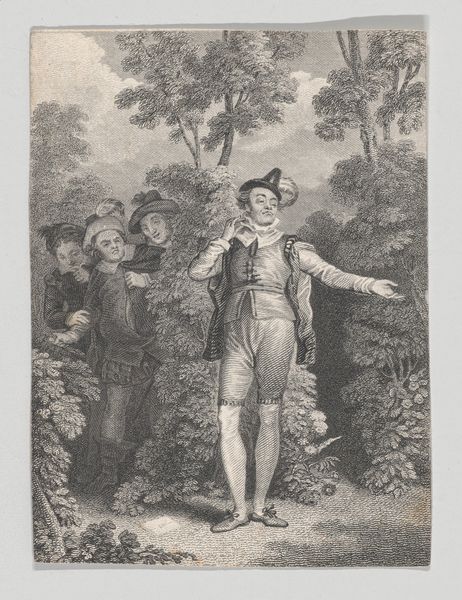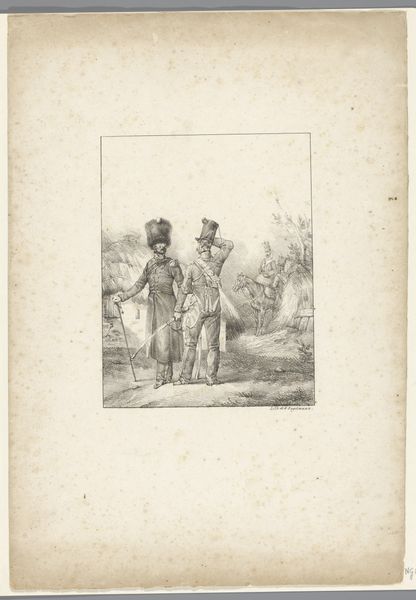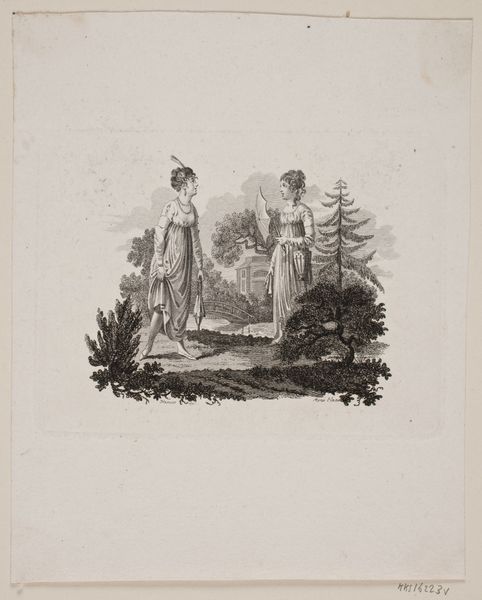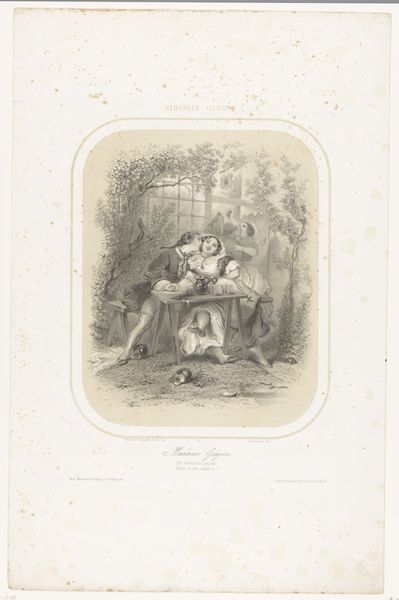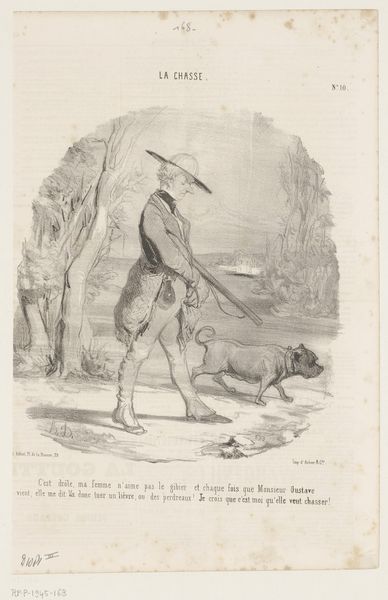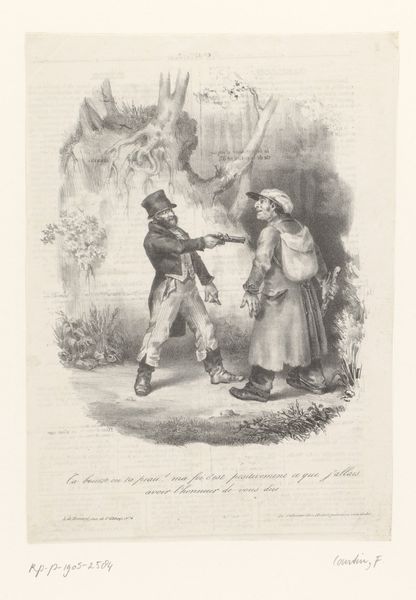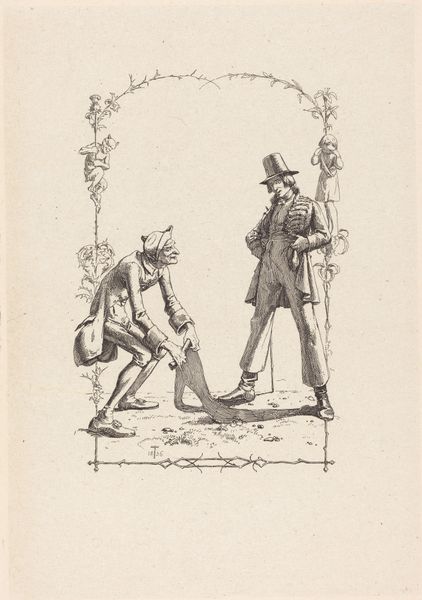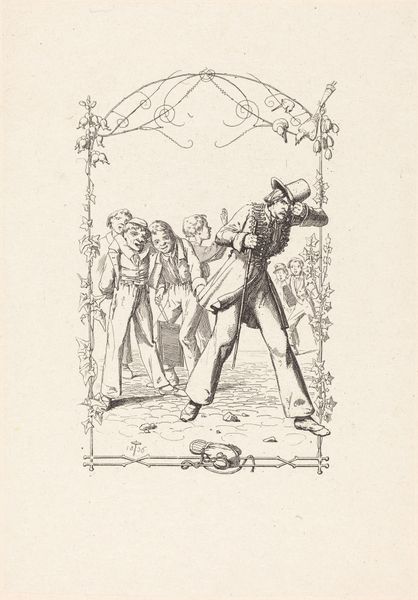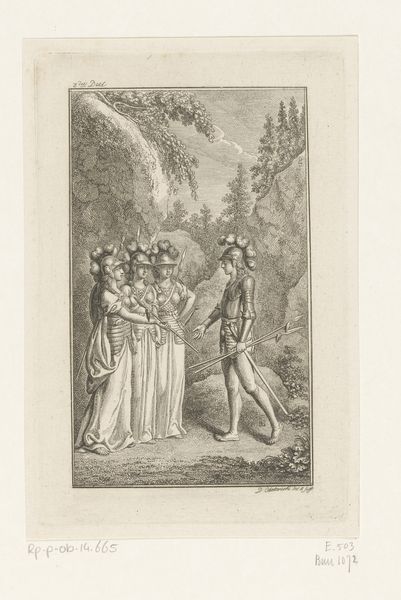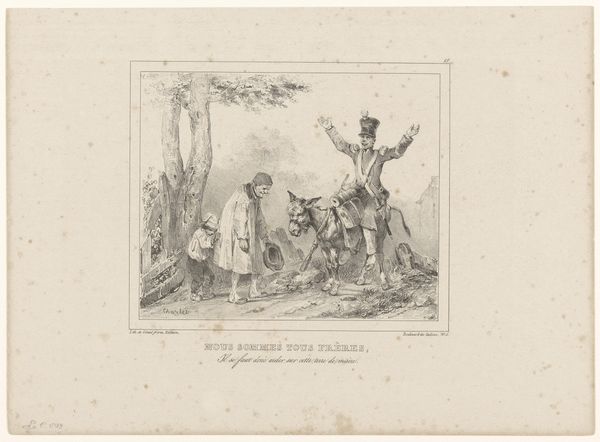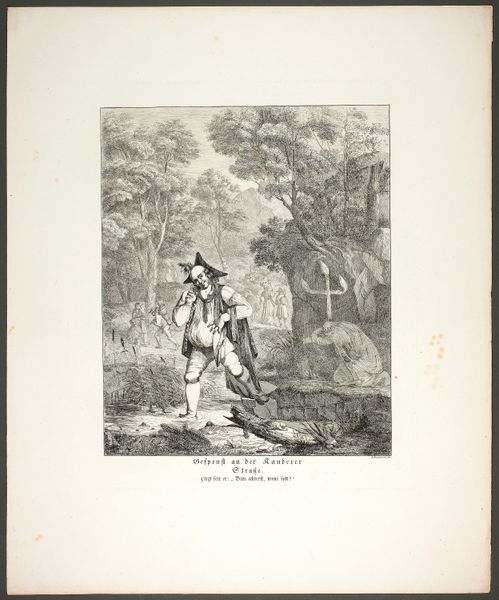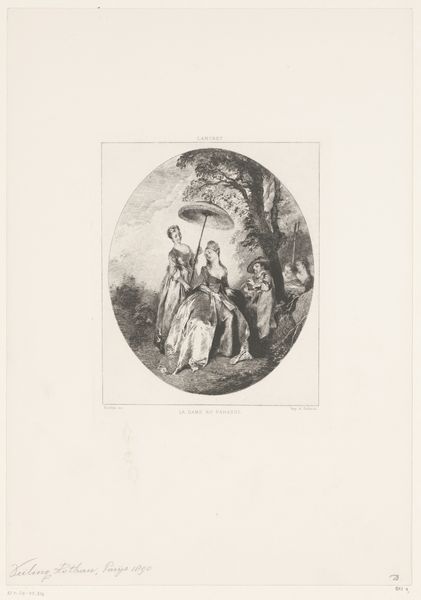
print, engraving
#
portrait
# print
#
landscape
#
figuration
#
romanticism
#
line
#
genre-painting
#
engraving
Dimensions: sheet (cut within platemark): 18.9 x 16 cm (7 7/16 x 6 5/16 in.)
Copyright: National Gallery of Art: CC0 1.0
Curator: So, here we have Isaac Cruikshank’s print, "The Sportsmen's Departure," an engraving that speaks volumes, doesn’t it? Editor: It certainly does. My first impression is one of contrasts. We have tenderness with the couple near the doorway and the forward motion suggested by the hunter. It evokes a melancholy sense of leaving. Curator: Look closely at the lines – the cross-hatching to build up tone. Notice how it creates texture and suggests volume, especially in the clothing of the sportsmen, also note the method of reproduction. Cruikshank's print medium allows for a wide dissemination. Who is accessing these images, what narratives are taking hold through circulation? Editor: Yes, the circulation is key. It hints at the ritual of departure, doesn't it? This imagery, like the pointing gesture or the couple in embrace, seems charged. Departure motifs are ancient and resonant. How do you see this playing out? Curator: I see the material and labor transforming the natural world, this landscape they enter. This idealized country excursion masks what the economic realities behind those tailored suits might look like. I also think that choice of sepia connects the Romantic scene with its physical support – we understand these themes by understanding its materiality as being reproducible and disseminated. Editor: An interesting perspective, certainly. But beyond that, what is being carried through this easily disseminated artwork? It could point to longing, not just for landscape or freedom, but something within domestic relationships—the emotional tug that we see mirrored again and again in this motif. It might ask us if we're really as 'free' as this ideal proposes. Curator: Indeed. What better place than a landscape – literally etched with power relations and the economic realities of access – to have this freedom? The fact it is made with an engraving reinforces this theme of dissemination of capital in a romanticized context. Editor: So, ultimately, we find ourselves seeing departure—both in action, in meaning, and maybe even hinting at an ideal of departure for ourselves from what it is now as we experience it. Curator: A powerful symbol, yes. I like how studying the production adds new interpretations to the subject’s iconography, ultimately offering a richer account than could be achieved either approach alone.
Comments
No comments
Be the first to comment and join the conversation on the ultimate creative platform.
